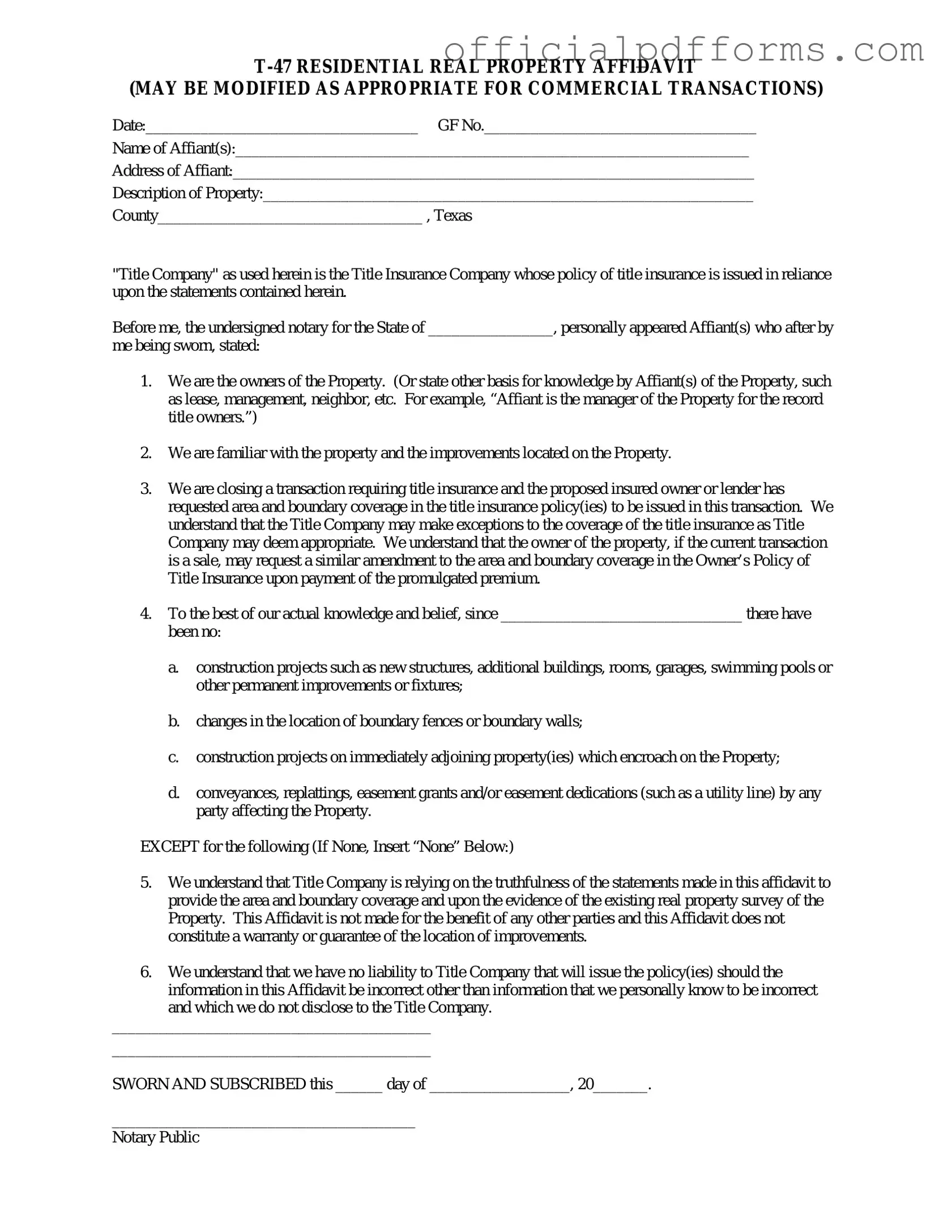The T-47 form is a legal document used in Texas during real estate transactions. It serves as an affidavit that provides a sworn statement regarding the property’s current state and any existing liens or encumbrances. This form is often required by title companies to ensure a clear title transfer.
The T-47 form must be completed by the property owner or seller. If the property is owned by multiple individuals, all owners must sign the affidavit. This ensures that all parties are aware of the property’s status and any potential issues that may affect the sale.
The T-47 form should be submitted during the closing process of a real estate transaction. It is typically required before the final closing documents are signed. Timely submission is crucial to avoid delays in the closing process.
The T-47 form requires several key pieces of information, including:
-
The property address.
-
The names of all property owners.
-
A description of any existing liens or encumbrances.
-
A statement confirming that the information provided is accurate.
Completing this information accurately is essential to ensure a smooth transaction.
If the information on the T-47 form is found to be inaccurate, it can lead to serious consequences. Potential issues include delays in closing, legal disputes, or even financial liability for the seller. It is critical to review all information carefully before submission.
Yes, the T-47 form must be notarized. This adds a layer of verification to the information provided, ensuring that the signatures are legitimate and that the document is legally binding. Notarization helps protect all parties involved in the transaction.
The T-47 form can be obtained from various sources, including:
-
Title companies.
-
Real estate attorneys.
-
Online legal form providers.
Ensure that you are using the most current version of the form to comply with Texas regulations.
